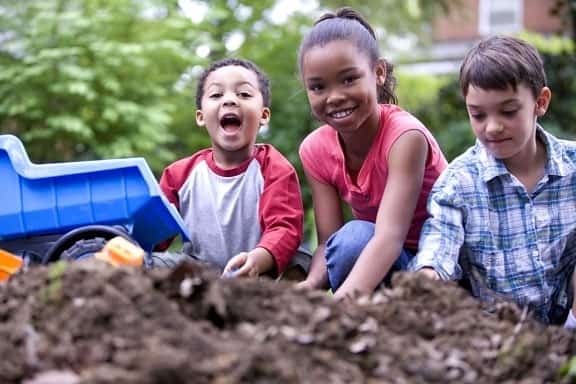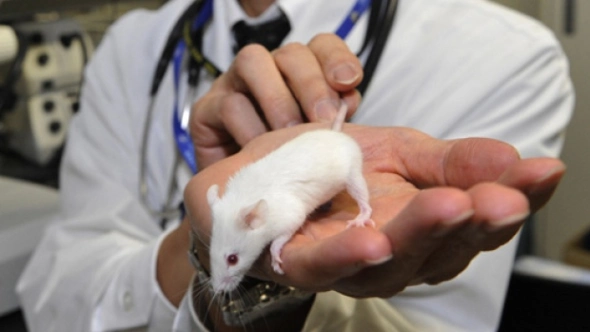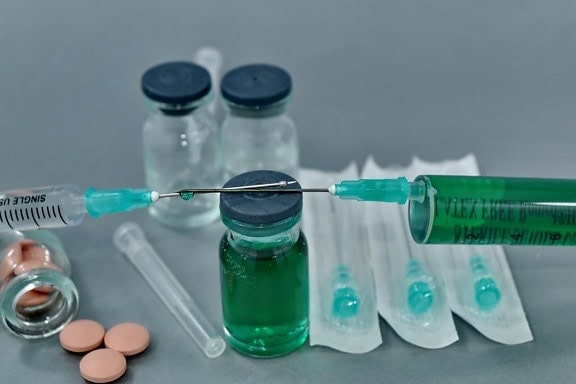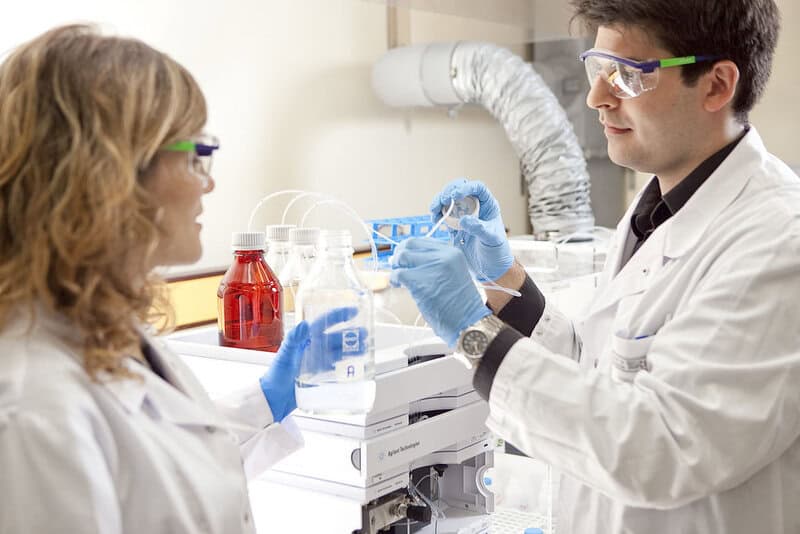Vaccines have long been the subject of passionate discussion, especially when it comes to their ingredients. Aluminum, used as an adjuvant to boost immune response, often sits at the heart of these debates. Recently, scientists undertook the largest vaccine safety study ever, tracking over a million children to examine the safety of every vaccine dose—aluminum included. This monumental research offers new clarity in an area clouded by myths and fears. Understanding the facts and scientific evidence is more crucial than ever for informed decision-making.
1. 1.2 Million Children Were Tracked for 24 Years in the Largest Vaccine Safety Study Ever

A groundbreaking Danish study followed 1.2 million children from birth for more than 24 years, meticulously recording every vaccine administered. This unprecedented research is the most comprehensive examination of vaccine safety ever conducted. By tracking such a vast cohort over decades, scientists were able to observe both short- and long-term health outcomes with unmatched precision. The sheer scale and duration of this study provide parents and health professionals with valuable, reliable data that few other studies can match.
2. Danish Researchers Used a Complete National Registry Where No Child Was Lost to Follow-Up

Denmark’s unique system of nationwide health registries played a crucial role in this study’s success. Every child’s health data—from birth through adolescence—was meticulously recorded, ensuring no participant was ever lost to follow-up. This level of comprehensive tracking is rare and eliminates the data gaps that often complicate or bias other studies. As a result, the findings are exceptionally reliable and representative of real-world vaccine safety outcomes for children in a modern healthcare system.
3. 50 Chronic Conditions Were Analyzed Including Autism, Asthma, and Autoimmune Disorders

The study didn’t just focus on a handful of outcomes—it examined 50 different chronic health conditions. Researchers closely tracked diagnoses commonly raised by vaccine skeptics, such as autism spectrum disorders, asthma, type 1 diabetes, epilepsy, and autoimmune diseases. By casting such a wide net, this research addressed concerns about both well-known and lesser-discussed conditions, giving a truly comprehensive picture of vaccine safety for children across a broad spectrum of health outcomes.
4. Zero Significant Links Were Found Between Aluminum Salts and Any Health Condition

After analyzing decades of data, researchers found no statistically significant connection between aluminum salts in vaccines and any of the 50 chronic health conditions studied. This includes conditions that have sparked the most parental concern, such as autism and autoimmune disorders. The results provide powerful evidence that the tiny amounts of aluminum used as adjuvants in childhood vaccines do not increase the risk of developing chronic diseases, supporting what many health experts have stated for years.
5. The Study Period Spanned 1997-2020, Covering Different Vaccination Schedules Over Time

A remarkable aspect of this research is its coverage of the years 1997 through 2020. During this time, Denmark’s vaccination schedules evolved, introducing new vaccines and updating doses as recommendations changed. This allowed researchers to evaluate the safety of aluminum adjuvants across a variety of immunization practices—not just a single protocol. As a result, the findings are both historically comprehensive and highly relevant to families following current vaccine guidelines today.
6. Aluminum Salts Aren’t Pure Aluminum – They’re Chemically Different Compounds

A common misconception is that vaccines contain chunks of metallic aluminum. In reality, vaccines use aluminum salts—such as aluminum hydroxide or aluminum phosphate—which are entirely different from the metal found in cans or foil. These compounds are carefully selected for their safety and effectiveness as adjuvants, helping the immune system respond more robustly to vaccines. Understanding this distinction is key to dispelling myths and appreciating the rigorous science behind vaccine formulation.
7. These Adjuvants Have Been Used Safely for Over 70 Years With Extensive Clinical Testing

Aluminum-based adjuvants have played a vital role in vaccine effectiveness for more than seven decades. Since their introduction in the 1930s and 1940s, they have undergone rigorous clinical testing and continuous monitoring in millions of children and adults worldwide. Numerous studies and regulatory reviews have consistently confirmed their safety, making them among the most well-studied components in medicine. This long history offers strong reassurance for parents concerned about vaccine ingredients.
8. Aluminum Salts Are Adjuvants, Not Preservatives – Designed to Boost Immune Response

It’s important to recognize that aluminum salts are adjuvants, not preservatives. Their primary function is to enhance the body’s immune response to a vaccine, making the immunization more effective with a smaller amount of antigen. Aluminum adjuvants help train the immune system to recognize and fight off diseases more efficiently. They are not used to prevent contamination or extend shelf life—those are the roles of preservatives, which are entirely different substances.
9. They Allow for Lower Vaccine Doses, Making Vaccines More Effective With Less Antigen

One of the key benefits of aluminum adjuvants is their ability to boost immune responses while allowing vaccines to use much smaller amounts of antigen—the part that actually triggers immunity. This means children receive fewer substances overall, reducing the risk of side effects and making vaccines safer and more efficient. By enhancing the body’s natural defenses, aluminum adjuvants help ensure strong, long-lasting protection with less exposure to foreign materials in each dose.
10. Breast Milk Contains More Aluminum Than Vaccines – 7mg vs 4.4mg in First 6 Months

Many parents are surprised to learn that infants naturally ingest more aluminum from breast milk than they receive from all their recommended vaccines in the first six months of life. According to the U.S. Food and Drug Administration, breast milk provides approximately 7 milligrams of aluminum, compared to just 4.4 milligrams from vaccines during the same period. This natural dietary exposure helps put the tiny amounts in vaccines into proper perspective.
FDA: Vaccines and Aluminum
11. Formula-Fed Babies Get 9 Times More Aluminum – 38mg Compared to Vaccine Exposure

For infants fed with formula, aluminum exposure is even higher than for breastfed babies. Over the first six months, formula-fed infants can ingest up to 38 milligrams of aluminum—about nine times more than the 4.4 milligrams from all routine childhood vaccines. This dietary comparison highlights how minimal the contribution of vaccines is to a baby’s overall aluminum intake. More details can be found at the
FDA: Vaccines and Aluminum.
12. Adults Consume 7-9mg of Aluminum Daily Through Normal Food and Water

Most adults regularly consume 7 to 9 milligrams of aluminum every day from ordinary foods and drinking water. Items like vegetables, grains, and even tea naturally contain trace amounts of this element. In comparison, the lifetime exposure from all childhood vaccines is tiny. This perspective helps explain why health authorities consistently consider vaccine-related aluminum to be safe. For more on dietary aluminum exposure, visit the
CDC: Vaccine Adjuvants.
13. Aluminum Is Everywhere in Nature – Found in Soil, Plants, Water, and Air

Aluminum is the third most common element on Earth, naturally present in soil, water, plants, and even the air we breathe. This means that trace exposure to aluminum is a routine part of daily life for everyone—even before vaccines or processed foods are considered. Its widespread presence in the environment helps explain why the human body is well-equipped to handle the small, regulated amounts encountered through vaccines. Learn more from the
ATSDR: Aluminum Toxicity.
14. Your Morning Coffee Has More Aluminum Than Your Child’s Entire Vaccine Schedule

A single cup of coffee can contain more aluminum than the total amount found in all childhood vaccines combined. Everyday foods and beverages—like coffee, tea, and baked goods—naturally absorb aluminum from water and soil. This puts vaccine-related exposure into clear perspective. While coffee drinkers rarely give this a second thought, the amount of aluminum in vaccines is actually far less than what we consume in a typical breakfast.
FDA: Vaccines and Aluminum
15. Aluminum Enters Bloodstream From Muscle Injection, Then Quickly Processed by Kidneys

After a vaccine containing aluminum adjuvant is injected into the muscle, a small fraction enters the bloodstream. The body rapidly recognizes and processes this aluminum. Most of it binds to proteins and is swiftly filtered out by the kidneys, being eliminated in urine within a matter of days or weeks. Healthy kidneys are highly efficient at removing this element, which is why significant accumulation or toxicity from vaccine aluminum is extremely rare.
Children’s Hospital of Philadelphia: Aluminum in Vaccines
16. Blood Aluminum Levels Don’t Increase After Vaccination – Proven in 85-Infant Study

A pivotal clinical study involving 85 infants found that receiving routine aluminum-containing vaccines does not cause a measurable rise in blood aluminum levels. Researchers carefully monitored infants before and after vaccination and detected no significant changes, confirming that the body efficiently manages the small amount introduced. This evidence further supports the safety of vaccine aluminum in real-world settings.
See the research at PubMed Central.
17. Hair Aluminum Concentrations Remain Stable, Showing No Accumulation in the Body

Researchers have also investigated whether aluminum from vaccines accumulates in the body by analyzing hair samples from children following immunization. The studies consistently found that aluminum concentrations in hair remain stable, with no detectable increase after vaccination. This indicates that the body does not store or build up aluminum from vaccines over time, further supporting the element’s safe profile when used as an adjuvant.
Read more at PubMed Central.
18. Kidneys Efficiently Eliminate Aluminum, Preventing Toxic Buildup

The human body is well-equipped to handle routine aluminum exposure, thanks in large part to the kidneys’ remarkable filtering ability. When aluminum enters the bloodstream, healthy kidneys rapidly filter and eliminate it through urine, preventing dangerous accumulation. This natural clearance mechanism is why most people—including infants and children—do not experience aluminum toxicity from vaccines or diet. For more on how the body processes aluminum, visit the
Children’s Hospital of Philadelphia: Aluminum in Vaccines.
19. WHO Confirms Safety Margins Are Never Exceeded, Even in Premature Babies

The World Health Organization (WHO) has established strict guidelines for aluminum exposure through vaccines. Studies confirm that even the most vulnerable populations—such as premature infants—never approach these safety thresholds. All recommended vaccines stay well within WHO’s conservative limits, ensuring a wide margin of safety for every child, regardless of age or birth status. Parents can find reassurance in these globally recognized standards.
WHO: Aluminum Adjuvants in Vaccines
20. Animal Studies Used Unrealistic Doses – Thousands of Times Higher Than Vaccines

Some anti-vaccine claims cite animal research to question aluminum safety. However, many of these studies expose animals to doses that are thousands of times greater than what a human child receives through vaccines. These extreme conditions do not reflect real-life vaccination schedules or exposures. Regulatory agencies and independent scientists consistently emphasize that findings from such inflated dosing studies cannot be meaningfully applied to human vaccine safety.
Children’s Hospital of Philadelphia: Aluminum in Vaccines
21. “Metal Injection” Claims Are Misleading – Aluminum Salts Behave Differently Than Metal

Claims that vaccines are “injecting metals” into children misrepresent basic chemistry. Aluminum in vaccines is present as a salt, not as metallic aluminum. These salts dissolve and interact with the body very differently than solid metal, and are processed safely through natural biological pathways. This distinction is crucial for understanding safety—aluminum salts do not behave like the metal found in foil or cans.
CDC: Vaccine Adjuvants
22. No Dose-Dependent Relationship Exists – More Vaccines Didn’t Mean More Problems

An important finding from the large-scale Danish study was the absence of a dose-dependent relationship between the number of aluminum-containing vaccines and the risk of developing health issues. Children who received more vaccines did not experience higher rates of chronic conditions compared to those who received fewer. This lack of correlation provides strong evidence that cumulative vaccine aluminum exposure is not linked to adverse health outcomes.
Read more in The New England Journal of Medicine
23. Neurotoxicity Fears Are Unfounded, Based on Misunderstanding of Chemistry

Concerns about aluminum in vaccines causing neurological harm are not supported by scientific evidence. The chemistry of aluminum salts used in vaccines—combined with the extremely low doses—means they do not pose a risk to the developing brain. Large-scale studies and toxicological reviews have thoroughly debunked the idea of vaccine-induced neurotoxicity. Aluminum’s safe use in vaccines is well established by decades of research.
Children’s Hospital of Philadelphia: Aluminum in Vaccines
24. 4 Million Lives Are Saved Annually by Vaccines – Far Outweighing Any Theoretical Risks

Each year, vaccines save an estimated 4 million lives worldwide by preventing deadly diseases like measles, diphtheria, and whooping cough. The extraordinary benefits of immunization vastly outweigh any hypothetical or unproven risks associated with aluminum adjuvants. The overwhelming scientific consensus affirms that vaccine safety measures, including the minimal use of aluminum, protect children and communities everywhere.
WHO: Immunization Coverage
25. Vaccine Safety Monitoring Is Unprecedented – No Other Medical Intervention Is Watched So Closely

Vaccines undergo continuous and rigorous safety monitoring unmatched by any other medical intervention. Systems like the Vaccine Adverse Event Reporting System (VAERS) and the Vaccine Safety Datalink in the U.S. ensure that even the rarest side effects are detected and investigated. Regulatory agencies around the world require transparency, open data, and frequent reviews, making vaccine safety science one of the most robust fields in medicine.
CDC: Vaccine Safety Monitoring
Conclusion

The comprehensive data from decades of research, including the largest vaccine safety study ever, provide overwhelming reassurance: aluminum in vaccines is safe. Scientific evidence consistently shows no link between vaccine aluminum and chronic health issues, even in the most vulnerable children. Ongoing public concerns are taken seriously, reflected in the unparalleled scrutiny and transparency of vaccine safety monitoring worldwide. Parents can be confident that immunization remains one of the safest, most rigorously tested ways to protect children and communities.
CDC: Vaccine Adjuvants
Disclaimer

This article is for informational purposes only and does not substitute for professional medical advice. Always consult a qualified healthcare provider regarding any questions about vaccines or your child’s health. For personalized guidance, speak with your doctor or pediatrician.
CDC: Vaccine Information for Parents



Vielleicht interessiert es Sie:
Wussten Sie! Minensuchratten auf dem Schlachtfeld und sie sind super effektiv!
Wie viele Giraffenarten gibt es? Leben sie alle in Afrika?
Der Vogel ist das Weibchen der Vögel: wahr oder falsch?
Warum bauen Biber Dämme? Welchen Nutzen?
Warum leben manche Tiere nachtaktiv? Welche Vorteile?
Küssen Tiere? Ist das die gleiche Bedeutung wie Menschen?
200+ Hilarious Seahorse Jokes That Will Make You Smile and Giggle
200+ Funny Investment Jokes to Boost Your Financial Humor Game